Activities to Pair with Change Sings: A Children’s Anthem
This lyrical, uplifting, and beautifully rendered book launches into both community-building and integrated learning across the disciplines. This is truly an exemplar text for a study of change at any grade level.
Bringing the Book into Your Classroom
Using the Author Biography to Encourage Neuro-Diverse Learners
Amanda Gorman’s coming of age in school with learning differences is a wonderful way to encourage all learners to find their passions and adaptations. Beyond that, learning about Gorman’s early years could be an opportunity to talk about neurodiversity with older elementary and middle school students.
Amanda Gorman’s website, theamandagorman.com, describes her as a wordsmith; however, as a young child she struggled with words and school. She had a speech impediment and a sensory processing disorder making her sensitive to sound—that she would find herself on stage in front of the whole nation as the youngest ever inaugural poet, and first ever National Youth Poet Laureate, was unimaginable at the time. But Gorman deftly developed her own adaptations. She discovered that she could avoid words with difficult phonemes by having a deep bank of synonyms to draw from instead. For example, instead of saying, “Girls can change the world,” (/r/’s were a challenge until age 20), she would say, “Young women can shape the globe.” When her third grade teacher read Ray Bradbury’s “Dandelion Wine” to the class, Gorman was struck by the power that words have to move the human heart and was inspired to cultivate her poetic gifts.
Activities
Watch an Interview with Amanda Gorman
Watch Amanda Gorman recite her 2021 inaugural poem:
Possible Discussion Questions
- What dreams does the protagonist in Change Sings have for her world?
- What are some of the needs of the community she notices?
- How does she use her gifts to create positive change in her community?
- What kind of change does she herself manifest?
- How does she inspire change?
- If your students could dream up any possibilities for what school could look and feel like, what would it be?
- What are the needs of your classroom community?
- What gifts or talents do your students bring?
Music & Social-Emotional Learning
Activities
Listen to some of these anthems to help students experience the genre.
- How do these songs make you feel?
- What about the words and the music make you feel that way?
- What does this book (and the song “We are the World” below) say about children’s role in the world?
- What wisdom and special abilities do children hold?
Middle: Alicia Keys, “Lift Every Voice and Sing”
Bottom: Gloria Gaynor singing “I Will Survive”
Justin Roberts Collaborates with the Chicago Symphony Orchestra
- How are your students feeling about returning to school after the pandemic?
- How do they want to feel about school?
- How can our feelings help us understand what we need?
- What were some of the things they have learned in different ways over the last 18 months?
- How do they hope to change this year?
- What are some of the feelings associated with these changes?
Changing Ordinary Scrap Materials into Musical Instruments
- Can changing sounds change our feelings?
- How can music express or support our emotional needs?
- How does music create community?
Create a Class Anthem
In another fabulous episode from illustrator Christian Robinson’s “Making Space” series he teams up with author Justin Roberts to write an anthem about speaking up for what you believe in, inspired by their book The Littlest Girl in the Littlest Grade.
Like Amanda Gorman’s main character in Change Sings, these two sing about being the change you want to see: acting in solidarity with “friendship, kindness, and to be fair.” This could lead to a wonderful opportunity to create (or review!) class charters. Students could also create an anthem for the class, highlighting their class charter, their dreams for the world, and/or students’ individual gifts, talents, and dreams.
- If your students could dream up any possibilities for what school could look and feel like, what would it be?
- What does your class stand up for?
Book Discussion Questions
- How is this book musical?
- Could you put the book to music?
- What would be the feeling of the tune accompanying the words of this book?
- Why do you think the author states that change “sings”?
- Why do you suppose Amanda Gorman calls this book an anthem?
- Is the book uplifting?
- Who identifies with the message of the book?
Incorporating Visual Arts

Kwadwo Adae is a local New Haven artist who has created numerous works of public art. Many of his wall murals can be seen throughout the city, including Mothers, Daughters, & Sisters of the Firelight at 400 Goodrich Street, Sparrow Squadron at the corner of Dixwell Ave and Division Street, and Mighty Oaks (from Tiny Acorns Grow) at Edgewood Magnet School. Adae’s most recent wall mural, on Henry Street, features New Haven trailblazer Dr. Edward Alexander Bouchet, who made history as the first Black man in the United States to earn a Ph.D. when he graduated from Yale University in 1876. Adae felt that everyone in New Haven should know this monumental achievement, and so, in bright, bold colors reflecting physicist Dr. Bouchet’s research in refractive indexes (how light is broken up), Adae and the community members who joined him depicted this trailblazer to memorialize his contribution to the community and society at large.
Discussion:
Look at the imagery and colors of this Adae’s wall mural honoring Dr. Bouchet. How are they reminiscent of Loren Long’s MLK mural in Change Sings?
Activities
Learn More about Kwadwo Adae
Adae is not only a renowned artist, but a student of math, color, and science, and a gifted educator. He is also committed to working with and supporting students and has collaborated in various ways with schools around the city. Consider reaching out to him to forge a relationship with your class or school. There are also numerous articles written about him and his works in local papers, linked below, for your students to engage in their own primary documents research.
Articles about New Haven artist Kwadwo Adae:
- Mr. Bouchet Finds a Home on Henry Street
- Kwadwo Adae Paints Protest through Portraiture
- Historic Black Role Model Depicted on New Haven’s Henry Street
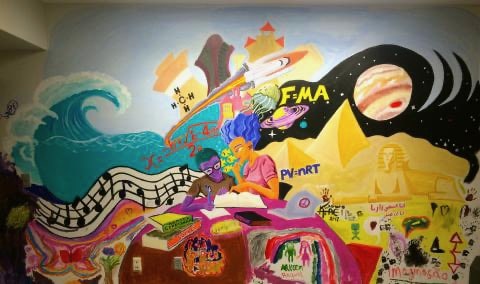

Create a Classroom Mural
Using the research and thinking your class has done on change-makers, art, music, social contracts, and social movements, consider creating your own work of art – perhaps a collaborative wall mural involving the broader community. Your class could brainstorm to recognize an individual or group of people to commemorate.
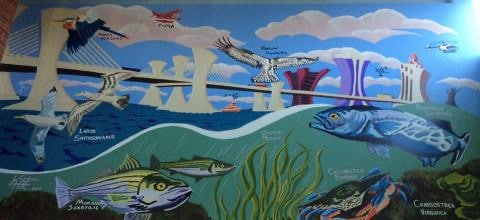
Possible Discussion Questions
- What is public art?
- What is the purpose of this public art?
- What effect do these wall murals have on viewers?
- What story do the colors tell?
- Look for examples of public art or wall murals in your school neighborhood.
- What is depicted?
- Why do you think the artist chose to paint a particular scene?
- What do these works of art say about the community they are in?
- What does the art say to the people in the community?
More Curriculum Tie-In's
At its core, Change Sings is a study in how social movements occur: sparked by care for the environment (social and physical), ignited by personal growth, and fueled in relationship and action. To understand these critical components of environment, growth, change, and movement, there is no greater teacher than nature. Empower your students to invest in their personal and community growth by integrating your STEAM curriculum. While the cognitive connections may be abstract and out of reach for younger learners, the experience of working with materials nurtures an intuitive/embodied understanding.
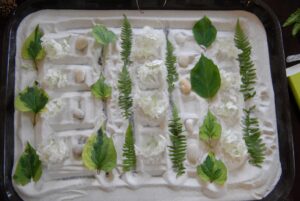
How Using Natural Materials Enhances Learning
The way a classroom is set up- its colors, displays, materials- plays an oversized role in the lives of young children as they spend time exploring and making discoveries about themselves and the objects around them. The following are some ways that natural materials maximize learning with young children.
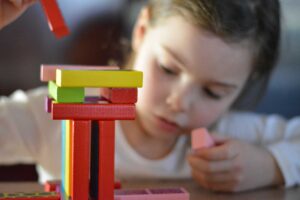
Motion and Stability Themed Activities
Veteran science educator Leslie Long shares engaging activities for pre-k to grade 5 students learning balancing and other physics-related themes within Next Generation Science Standards (NGSS).

Integrating Natural Materials in the Classroom
Julie Peterman’s attempt at creating a more natural setting in my public school classroom had her hauling bags of birch bark, sticks, stones, pine cones, seed pods, and seashells.
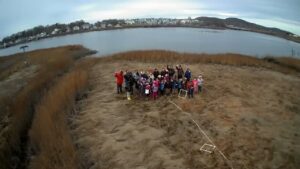
Learning about Science and Nature through Community Connections
Conte West Students Learn about Science and Nature through Field Work and Community Connections. 2017-18 Seedlings Fellow Diane Huot, a first grade teacher in New Haven, has incorporated field trips to Quinnipiac Meadows Reserve into her class’ study of habitats and organisms with her class.
